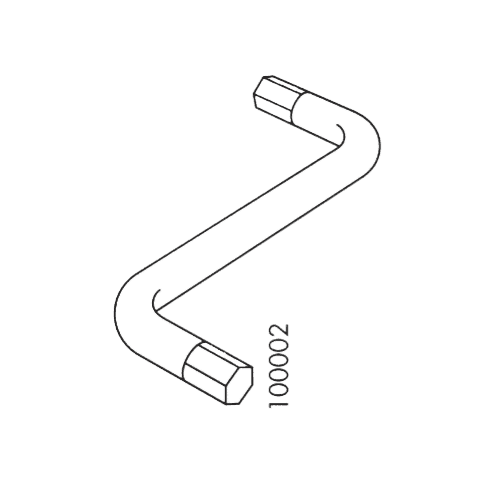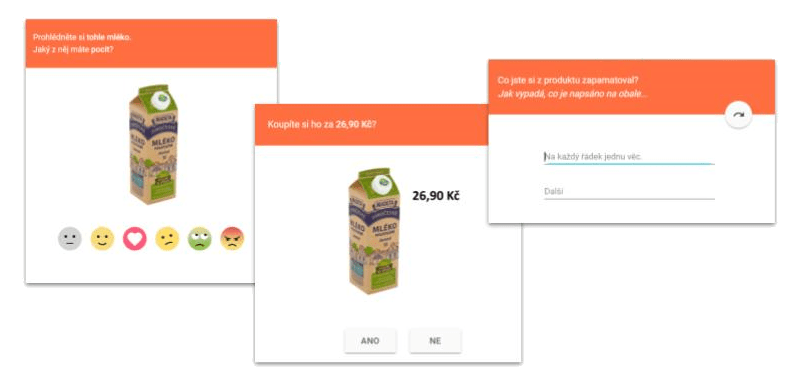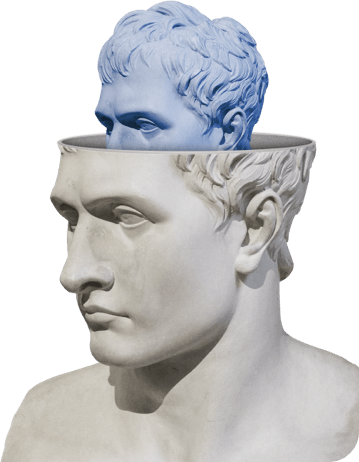Ecology in marketing
-
 Vojtech Prokes
Vojtech Prokes
- 1. March 2022

Each of these projects presents a different kind of campaign and approach. We will show you one global well-estabilished star, which promotes your eco-activity over the long-term, one unexpected newcomer with a time-limited campaign, and one particularly specific and tangible act – a change in recyclable packaging. The realistic impact on the environment is the most important, however, we are unable to measure that impact on an online research panel. Which is why we preferred to ask: what do customers think of these three “green swallows”?
IKEA: There is nothing more effective than a good idea
But first, we’ll start with a small inventory check. 74% of people in the Czech Republic like IKEA, which would be great news for any business. Positive emotions coincide with clientele: People who have a good feeling in connection with IKEA also shop there more often.

Emotions fundamentally influence decision-making and they make better predictions regarding decisions than rational evaluations.
The study even showed that if the emotional centre in our brain is damaged, we are unable to make decisions, even regarding the most balanced situations. For example, answering “what do I want for lunch?” turns into a tricky issue, which can only be solved by studying the menus of every available restaurant, thinking over the nutritional values, calories, and a number of other factors, whereas we would normally just say: “Hmm, meatballs sound good.”
The Swedes who sell meatballs, lunches... and furniture
The strongest associations with IKEA are the Swedes, meatballs, and the restaurant. Other strong associations include the wide assortment, the “built it yourself” approach, the hex key (inbus), and favourable prices.
In order for people to choose your brand, your brand has to come to mind in shopping situations and the people have to like your brand. Achieving this is then supported by dozens of specific associations in our subconscious, which is something we are able to measure. We perform an analysis of which of symbols are helping your brand and which are doing the opposite.
A good association strengthens positive emotions, it is unique, and it is linked with the given brand.
One example is the restaurant in IKEA where you order the meatballs. By no means is this just another form of making profit, rather it is a carefully thought-out game of associations, which IKEA has managed to place in our minds. The association of the meatballs significantly helps the brand because it supports us remembering the brand when we feel the need to buy new furniture. How is this possible? The meatballs are closely connected with this unique brand (non-interchangeable), and they help us like the IKEA brand more.
Vojtěch Prokeš, Director of Research Behavio
Less than one third of people care where their wardrobe comes from
Most of us are primarily interested in purchasing quality furniture that we can easily put together by ourselves at home. Czechs simply do not experience sustainability in the furniture industry. 15% of people are completely oblivious of this issue, 58% are “about half” aware of sustainability, and only 27% of Czechs care whether the products they are purchasing harm the environment.
This less than one third percent of people is key for IKEA. However, that does not mean that their core fan base is made up exclusively of this group, nor that they would associate the brand more often with ecological topics. In this respect, Czechs who are interested in frugality “score” the same as the general population. For IKEA, they represent a target group with unfulfilled potential – the topic of ecology is important to them, they just haven’t (yet) heard how the brand deals with it, or they do not trust it.
Today, one third of Czechs are interested in ecology within this field, but with the following campaigns, IKEA and other brands can gradually educate their customers in order to raise their awareness. IKEA already spontaneously comes to the minds of most people when it comes to buying furniture, meaning it already has a particularly strong position in the market. Plus, certain green issues, especially ideas like ending the use of disposable plastics and implementing renewable energy in stores, actually work very well. They are unique and they improve the emotions linked with the brand. As IKEA continues to invest in them, these coveted associations will make their way into the minds of more people and subconsciously improve their overall brand, which increases the people’s chances of visiting an IKEA when they are in need of a new couch.
The end of single-use plastics
By 2020, IKEA wants to stop selling single-use plastic goods.
20% of Czechs connect IKEA with this association.
Great! A really good feeling is associated with IKEA, which is then strengthened by this positive emotion. It makes for a good symbol, however, it is yet to address a large portion of the target group.
Furniture given a second chance
IKEA is buying used furniture, they offer the buyer a price for it, and subsequently sell it right in one of their stores.
9% of Czechs connect IKEA with this association.
They like the idea, but it doesn’t do anything for the overall emotion towards the brand. The need for an ecological solution for furniture is generally low on average.
Renewable energy
in stores
By 2020, IKEA wants 100% of their energy to come from renewable sources.
18% of Czechs connect IKEA with this association.
It strengthens their positive emotion towards the brand, and it is sufficiently unique. That’s great!
A better world starts
at home
Methods of using less water and energy, minimalizing your carbon footprint and wasting food.
18% of Czechs connect IKEA with this association.
It doesn’t, however, strengthen their emotion towards the brand, and there isn’t enough contrast. It doesn’t differ the brand from its competition.
"Making the Czech Republic just a little bit better" campaign
Since 2019, the ice cream manufacturer Míša has challenged its customers to come together and clean up nature. By this point, the Míša team has held over 100 events, and the campaign is supported by about 70 ambassadors and over 10,000 people who have promised they will not litter in nature. Míša has joined up with some chosen influencers and it encourages consumers to collect rubbish, or to even organize group cleaning efforts in their area.
A good idea, however...
We familiarized respondents with the campaign, and then had them write on a blank line the first word that came to mind. The fans of the campaign wrote: good idea, cleanup nature, beneficial, nice, inspirational, and family.
Oppositely, critics of the campaign doubted whether people’s relationship to nature would change in any way thanks to this ad. They also didn’t understand why exactly ice cream should be associated with collecting rubbish.
Traditional, Czech, family, cottage cheese
The cottage cheese ice pops made by Míša are known by 90% of people in the Czech Republic. And 85% of people feel positively toward the ice cream, with 53% even feeling a strong positive emotion.
Most often people associate Míša ice cream with the following terms: traditional and Czech. Neither of these associations, however, help in building positive emotions. In this perspective, they are neutral – they aren’t helping, but they aren’t causing any damage either. They come off as being quite general; “traditional” and “Czech” are dime a dozen.
On the contrary, associations with great taste and family strengthen a brand and need to be emphasized further in campaigns. Approximately one third of Czechs associate Míša with these two attributes. It is the association with the family that is actually being enhanced by the campaign – the video shows a family with children, and the part-time cleaning groups are also organized for the whole family, which even include entertaining games for the younger helpers.
The ad didn't reach enough people, and it didn't help the brand very much
A successful campaign strengthens the positive emotions associated with the brand. Therefore, the fundamental indicator for measuring the successfulness of a campaign is a change in the positive emotion towards the brand and the reach of the campaign. And, well… the campaign wasn’t quite so successful in this area:
Poor reach. The ad was only ran online and only 13% of people said they saw it (of that 13%, only 3% said they were sure they saw the ad, while the other 10% said they had “most likely” already seen it).
Low memorability. Those who saw the campaign were only slightly more successful in matching the slogan from the campaign to the brand than those who had never even seen the ad.
People were more successful in remembering only the “Making the Czech Republic just a little bit better” slogan. Only 38% of people associated the slogan to Míša ice cream, and even the slogan didn’t help in improving the emotion toward the brand. However, given the fact that the slogan hasn’t been used for very long, means it could be successful in the future.
Which associations from the ad do people connect to Míša?
Ad ratings
The campaign only ran online and via influencers for one summer, i.e. one season. It is possible that should the brand continue airing the campaign, people will gradually start to associate Míša with its ecological benefits. A few people already have the slogan “help save the environment” stored in their heads, the only problem is that this association is interchangeable and the emotion towards the brand is only improved slightly. Ideally, Míša needs to find a strong, contrasting symbol for cleaning up nature – for instance, a strikingly green bear who promotes other campaigns together with the associations which have already been working for a while now, such as “family”.
(Don't) Judge milk by its packaging
Madeta introduced a “100% recycled packaging of responsibly sourced wood for their milk products”, or, in other words, a matte brown version of the cartons they used to use. We first tested respondents by showing them the individual packaging and asked them to rank them using a line of smiley faces which best show how they feel toward the cartons.
The milk inside remained the same, only the outside had changed. We discovered that both the old and new (ecological) packaging caused about the same emotions, and three fourths of people liked them.
After having ranked the packaging, the respondents wrote on an empty line what they remembered of the two options. For the brown packaging, the most frequently repeated word was “recyclable”, meaning the people successfully associated the design with the topic of recycling.

Ecological packaging draws in more people, even if the product costs more.
In the second round of testing, we placed the respondents in a purchasing situation. The “Task, don’t ask” method is more akin to the real world and decision-making than classic questions, such as “how would you act if…”. These types of questions activate people’s rational (slow) thinking, something that is actually “asleep” when we’re in a real store. When shopping we use a different part of the brain to make decisions (fast thinking), where our emotions and associations do most of the “talking”.
*In our AB test (each group of respondents is given a different variation), we tested whether people would purchase the given carton of milk at the suggested price. Each person was only given one milk packaging option, either the eco or non-eco packaging, and they were asked to decide whether they would buy it or not under the given conditions.
Of course, with the rising prices, fewer people are willing to purchase the milk. In all three examined price categories, however, the recyclable packaging won each time. Thus, people are willing to pay more money if they have the feeling they are helping the environment with a recyclable carton. And that is great news! Now we just have to be careful that we’re left with more than just a feeling, so that we don’t all go and fall for bold-faced greenwashing schemes with a big smile on our faces. And the same goes for buying furniture, ice cream, or milk products.


